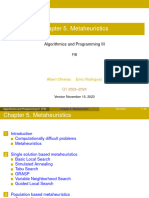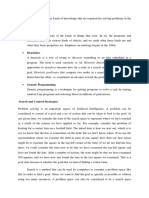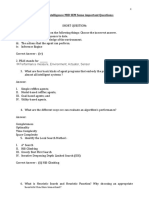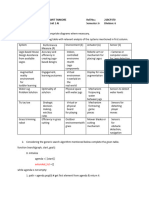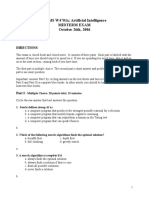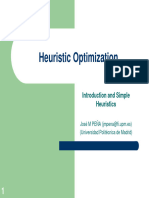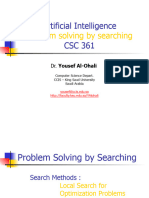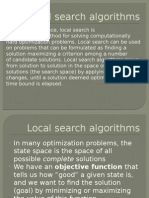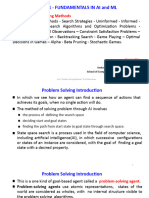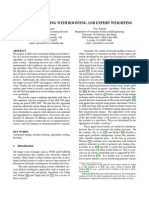0% found this document useful (0 votes)
36 views4 pagesTutorial 3 - Metaheuristics - Sample Answer
The document discusses metaheuristics, which are algorithmic frameworks for solving complex optimization problems by balancing exploration and exploitation. It outlines key characteristics, components, and strategies for escaping local optima, including Iterated Local Search (ILS) and Tabu Search. Additionally, it provides a case study on applying these methods to exam timetabling, emphasizing the importance of memory structures and solution representation.
Uploaded by
Simon Lau Boung YewCopyright
© © All Rights Reserved
We take content rights seriously. If you suspect this is your content, claim it here.
Available Formats
Download as DOCX, PDF, TXT or read online on Scribd
0% found this document useful (0 votes)
36 views4 pagesTutorial 3 - Metaheuristics - Sample Answer
The document discusses metaheuristics, which are algorithmic frameworks for solving complex optimization problems by balancing exploration and exploitation. It outlines key characteristics, components, and strategies for escaping local optima, including Iterated Local Search (ILS) and Tabu Search. Additionally, it provides a case study on applying these methods to exam timetabling, emphasizing the importance of memory structures and solution representation.
Uploaded by
Simon Lau Boung YewCopyright
© © All Rights Reserved
We take content rights seriously. If you suspect this is your content, claim it here.
Available Formats
Download as DOCX, PDF, TXT or read online on Scribd
/ 4







